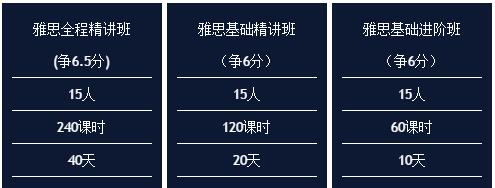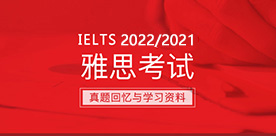雅思剑11Test3Passage1阅读译文—丝绸的故事
2017/4/9 14:17:01来源:新航道作者:新航道
摘要:今天,上海新航道雅思小编给大家带来了剑桥雅思11Test3阅读原文Passage1翻译,相应的答案解析会在下篇文章给大家带来分享。
今天,上海新航道雅思小编给大家带来了剑桥雅思11Test3阅读原文Passage1翻译,相应的答案解析会在下篇文章给大家带来分享。
剑桥雅思11Test3阅读原文Passage1翻译
THE STORY OF SILK
丝绸的故事
The history of the world’s most luxurious fabric, from ancient China to the present day
世上最昂贵奢华织物的历史,从古代中国直到今天
Silk is a fine, smooth material produced from the cocoons — soft protective shells — that are made by mulberry silkworms (insect larvae). Legend has it that it was Lei Tzu, wife of the Yellow Emperor, ruler of China in about 3000 BC, who discovered silkworms. One account of the story goes that as she was taking a walk in her husband’s gardens, she discovered that silkworms were responsible for the destruction of several mulberry trees. She collected a number of cocoons and sat down to have a rest. It just so happened that while she was sipping some tea, one of the cocoons that she had collected landed in the hot tea and started to unravel into a fine thread. Lei Tzu found that she could wind this thread around her fingers. Subsequently, she persuaded her husband to allow her to rear silkworms on a grove of mulberry trees. She also devised a special reel to draw the fibres from the cocoon into a single thread so that they would be strong enough to be woven into fabric. While it is unknown just how much of this is true, it is certainly known that silk cultivation has existed in China for several millennia.
丝绸是种细软、光滑的布料,产自桑蚕(该昆虫的幼体形态)制作出的蚕茧——即其柔软的保护性外壳。传说中是嫘祖,即大约公元前三千年时期的中国统治者黄帝的妻子,发现了蚕。其中一个故事是这样描述的:当她漫步于自己丈夫的花园之中时,她发现几棵桑树之所以生长遭受破坏正是由于树上的蚕虫。她收集了一些蚕茧并坐下来歇息。正巧在她啜饮着一杯茶时,这些蚕茧中的一粒掉进了热茶中并开始松散成为一根细丝。嫘祖发现她可以将这根丝线绕在自己的手指上。于是,她说服了丈夫允许她在一片桑树林内养蚕。她还设计发明了一种特殊的卷轴来将蚕茧中的纤维纺成丝线,这样它们就能足够强韧以编纺成织物。虽然这个故事中究竟有多少真实成分我们不得而知,但有一点是确定无疑的:丝绸的生产在中国早己存在了数千年之久。
Originally, silkworm farming was solely restricted to women, and it was they who were responsible for the growing, harvesting and weaving. Silk quickly grew into a symbol of status, and originally, only royalty were entitled to have clothes made of silk. The rules were gradually relaxed over the years until finally during the Qing Dynasty (1644-1911 AD), even peasants, the lowest caste, were also entitled to wear silk. Sometime during the Han Dynasty (206 BC-220 AD), silk was so prized that it was also used as a unit of currency. Government officials were paid their salary in silk, and farmers paid their taxes in grain and silk. Silk was also used as diplomatic gifts by the emperor. Fishing lines, bowstrings, musical instruments and paper were all made using silk. The earliest indication of silk paper being used was discovered in the tomb of a noble who is estimated to have died around 168 AD.
起初,桑蚕业完全是只由女性来进行的,她们要负责种植、收获和纺织。丝绸很快成为了一种社会地位的象征,最早只有皇室成员才有资格穿着丝绸衣物。这些规矩在之后的年月里逐渐变得不那么严苛了,直到最终在清朝(公元1644~1911年)时期,即使是最低阶层的农民也有资格穿上丝绸了。在汉朝(公元前206~公元220年)的某个时期,丝绸的身价昂贵到被用作某种形式的流通货币。朝廷官员的俸禄是用丝绸来支付的,而农夫则用谷物和丝绸来完税。丝绸还被皇帝用作外交礼物。渔线、弓弦、乐器和紙皆由丝绸制作而来。人类最早使用丝质纸的证据发现于一位贵族的墓中,据估计此人大约死于公元168年。
Demand for this exotic fabric eventually created the lucrative trade route now known as the Silk Road, taking silk westward and bringing gold, silver and wool to the East. It was named the Silk Road after its most precious commodity, which was considered to be worth more than gold. The Silk Road stretched over 6,000 kilometres from Eastern China to the Mediterranean Sea, following the Great Wall of China, climbing the Pamir mountain range, crossing modern-day Afghanistan and going on to the Middle East, with a major trading market in Damascus. From there, the merchandise was shipped across the Mediterranean Sea. Few merchants travelled the entire route; goods were handled mostly by a series of middlemen.
人们对这种异域织物的大量需求最终催生出了现在被称为“丝绸之路”的这样一条一本万利的贸易路线,向西输送丝绸而向东则运来金、银和毛料。之所以叫做“丝绸之路”,正是以其最珍贵的商品而得名,它被视为比黄金更贵重。“丝绸之路”从中国东部一路绵亘6000多公里直达地中海,沿着中国长城的路线,攀越帕米尔山脊,穿过今日的阿富汗并延伸到了中东地区,在大马士革有一个主要交易市场。各种货物从那里再由船运跨过地中海销往各地。很少有商人会走遍整条路线;货物大多是由一系列的中间经手人交接传递的。
With the mulberry silkworm being native to China, the country was the world’s sole producer of silk for many hundreds of years. The secret of silk-making eventually reached the rest of the world via the Byzantine Empire, which ruled over the Mediterranean region of southern Europe, North Africa and the Middle East during the period 330-1453 AD. According to another legend, monks working for the Byzantine emperor Justinian smuggled silkworm eggs to Constantinople (Istanbul in modern-day Turkey) in 550 AD, concealed inside hollow bamboo walking canes. The Byzantines were as secretive as the Chinese, however, and for many centuries the weaving and trading of silk fabric was a strict imperial monopoly. Then in the seventh century, the Arabs conquered Persia, capturing their magnificent silks in the process. Silk production thus spread through Africa, Sicily and Spain as the Arabs swept through these lands. Andalusia in southern Spain was Europe’s main silk-producing centre in the tenth century. By the thirteenth century, however, Italy had become Europe’s leader in silk production and export. Venetian merchants traded extensively in silk and encouraged silk growers to settle in Italy. Even now, silk processed in the province of Como in northern Italy enjoys an esteemed reputation.
由于桑蚕原产于中国,这个国家在许多个世纪里一直是全球唯一的丝绸产地。丝绸制作的秘密最终是经由在公元330~1453年间统治着地跨南欧、北非和中东的地中海地区的拜占庭帝国传到了世界上的其他国家。根据另一个传说,为拜占庭皇帝查士丁尼(Justinian)服务的僧侣们在公元550年将蚕卵藏在空心的竹子手杖里,偷偷带到了君士坦丁堡(即今日土耳其的伊斯坦布尔)。然而,拜占庭人和中国人一样守秘不宣,在很多个世纪里丝绸料子的纺织和贸易都受到帝国的严格把控垄断。然后在七世纪,阿拉伯人征服了波斯,在此过程中掠获了它们的华贵丝绸。丝绸生产由此随着阿拉伯人对非洲、西西里和西班牙的扫荡而传遍了这些地方。西班牙南部的安达卢西亚在十世纪里是欧洲的主要丝绸生产中心。不过到13世纪的时候,意大利则成为了欧洲丝绸生产和出口的领军者。威尼斯商人们到处进行丝绸贸易并鼓励制丝者来意大利定居。甚至是到了如今,意大利北部科莫省加工的丝绸仍然享有盛誉。
The nineteenth century and industrialisation saw the downfall of the European silk industry. Cheaper Japanese silk, trade in which was greatly facilitated by the opening of the Suez Canal, was one of the many factors driving the trend. Then in the twentieth century, new manmade fibres, such as nylon, started to be used in what had traditionally been silk products, such as stockings and parachutes. The two world wars, which interrupted the supply of raw material from Japan, also stifled the European silk industry. After the Second World War, Japan’s silk production was restored, with improved production and quality of raw silk. Japan was to remain the world’s biggest producer of raw silk, and practically the only major exporter of raw silk, until the 1970s. However, in more recent decades, China has gradually recaptured its position as the world’s biggest producer and exporter of raw silk and silk yarn. Today, around 125,000 metric tons of silk are produced in the world, and almost two thirds of that production takes place in China.
19世纪和工业化目睹了欧洲丝绸产业的衰落。更为廉价的日本丝绸,这种货物的贸易得到了苏伊士运河开通的极大推动,是促成这ー衰落趋势的许多因素之一。接下来在20世纪里,新型人造纤维材料,例如尼龙,开始应用在传统上一直使用丝绸的产品中,例如长筒袜和降落伞。两次世界大战切断了来自日本的原材料供应,也扼杀了欧洲丝绸产业。二战过后,日本的丝绸生产再度复工,生丝的制作工艺和品质都有所提升。直到20世纪70年代之前,日本始终是世界上最大的生丝生产者,实际上也是唯一的大规模生丝出口者。但是,在近几十年里,中国逐渐重拾昔日地位,成为全球最大的生丝和丝线生产者和出口国。今天,全世界大约生产125,000公吨的丝绸,其中几乎三分之二的产量出自中国。
以上就是小编为大家带来关于《剑桥雅思11真题阅读》供大家阅读参考,新航道雅思资料频道将第一时间为考生发布最全、最新、最专业的雅思资讯及雅思考试资料及机经。
更多雅思培训的相关信息,请关注上海新航道雅思频道 。
如需下载雅思相关资料请与上海新航道雅思页面 的“在线客服”联系。
或在下方注册表格内,请提交“姓名+电话+邮箱”,我们将于24小时内发送给你!
免费获取资料
热报课程
- 雅思课程
| 班级名称 | 班号 | 开课时间 | 人数 | 学费 | 报名 |
|---|
免责声明
1、如转载本网原创文章,情表明出处
2、本网转载媒体稿件旨在传播更多有益信息,并不代表同意该观点,本网不承担稿件侵权行为的连带责任;
3、如本网转载稿、资料分享涉及版权等问题,请作者见稿后速与新航道联系(电话:021-64380066),我们会第一时间删除。
全真模拟测试
制作:每每










